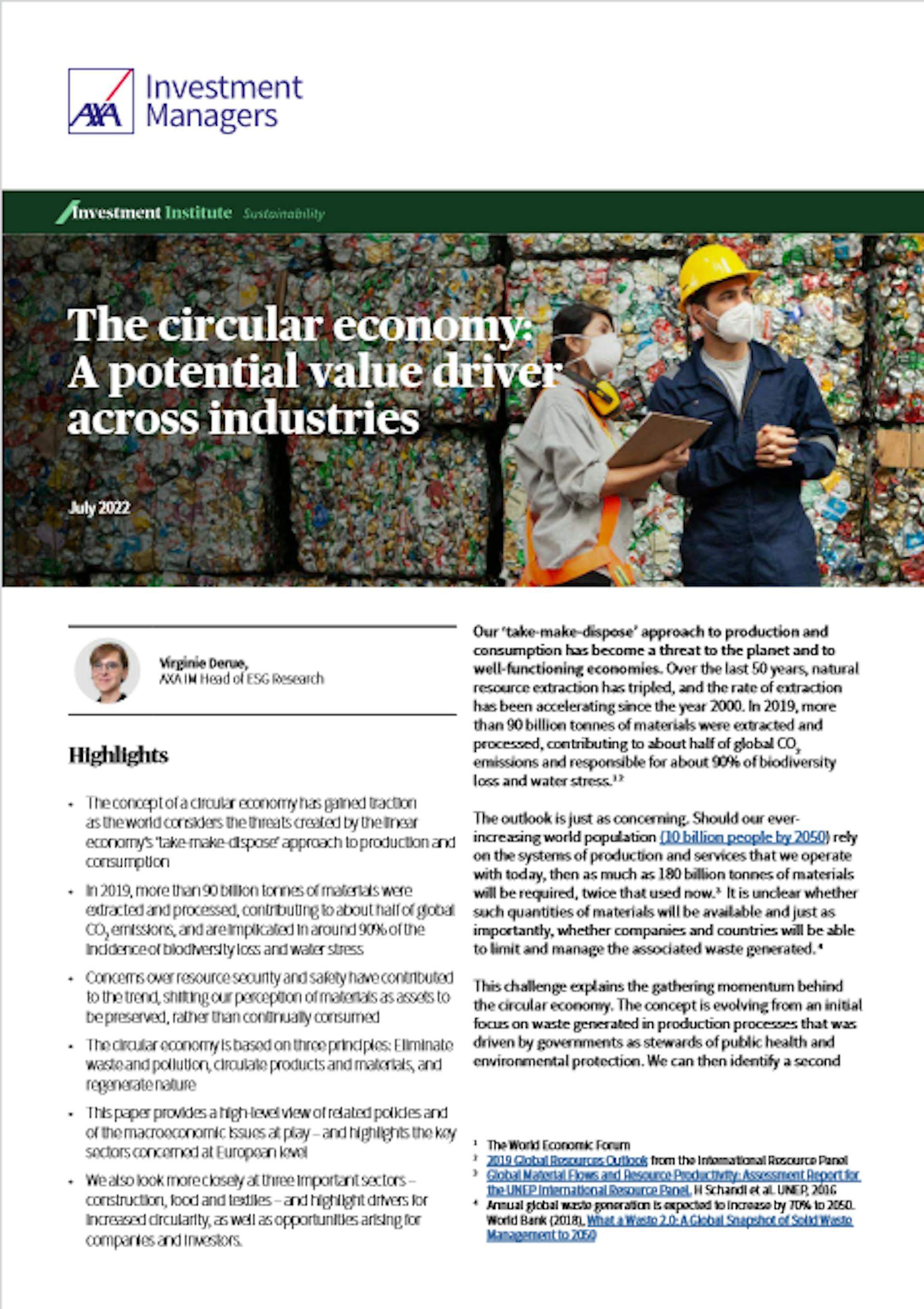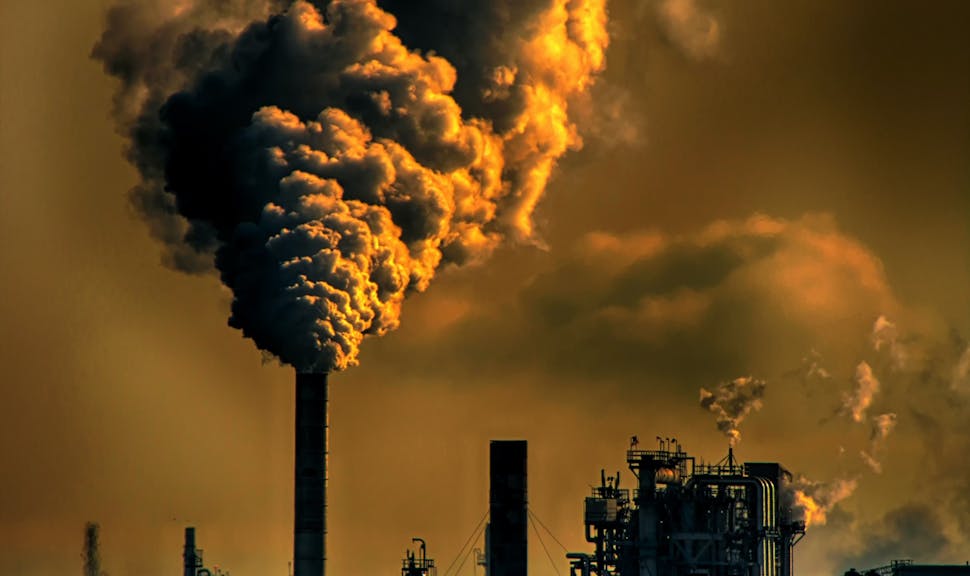

Virginie DerueHead of ESG Research, AXA IM
July 29, 2022
The circular economy: A potential value driver across industries
Our latest research paper sets out how the idea of the circular economy is changing the investment landscape – and takes a closer look at how it is affecting three of the most at-stake sectors.
4 minutes
Original Content: AXA IM
- The concept of a circular economy has gained traction as the world considers the threats created by the linear economy’s ‘take-make-dispose’ approach to production and consumption
- In 2019, more than 90 billion tonnes of materials were extracted and processed, contributing to about half of global CO2 emissions, and are implicated in around 90% of the incidence of biodiversity loss and water stress
- The circular economy is based on three principles: Eliminate waste and pollution, circulate products and materials, and regenerate nature
- In the construction, food and textiles sectors, there are drivers for increased circularity, as well as potential opportunities arising for companies and investors.
Our ‘take-make-dispose’ approach to production and consumption has become a threat to the planet and to well-functioning economies. Over the last 50 years, natural resource extraction has tripled, and the rate of extraction has been accelerating since the year 2000. In 2019, more than 90 billion tonnes of materials were extracted and processed, contributing to about half of global CO2 emissions and responsible for about 90% of biodiversity loss and water stress.1
The outlook is just as concerning. Should our ever-increasing world population (10 billion people by 2050) rely on the systems of production and services that we operate with today, then as much as 180 billion tonnes of materials will be required, twice that used now.2 It is unclear whether such quantities of materials will be available and just as importantly, whether companies and countries will be able to limit and manage the associated waste generated.3
This challenge explains the gathering momentum behind the circular economy. The concept is evolving from an initial focus on waste generated in production processes that was driven by governments as stewards of public health and environmental protection. We can then identify a second phase of the circular economy, from 1990 to 2010, as the focus moved towards connecting inputs and outputs to drive eco-efficiency. This led to the development of waste output metrics and implementation of more focused waste-reduction strategies. More recently, from about 2010 onwards, concerns over resource depletion have taken centre stage. The approach has shifted from managing waste to maximising the utilisation of raw materials in a context of high demand for resources.
There remains a lack of consensus on the exact definition of the circular economy in the scientific community, as well as on the terminology around it. The concept sits at the intersection of climate, natural resources and environment, extending to other areas of sustainability such as green economy, clean production or industrial ecology. Unlike climate issues, which put high-emitting sectors on the transition radar, the circular economy spans all sectors, accompanied by a series of risks and opportunities for responsible investors.
A crucial part of the transition, renewable energy is creating new challenges as we pursue this circularity. The largescale development of solar panels, wind turbines and batteries for storage or electric vehicles will materially increase the rate of extraction and transformation of specific materials. For batteries, notably, this will include lithium, cobalt and nickel and inevitably result in significant environmental damage related to extraction as well as scarcity effects and social challenges around the rights of affected communities. It will be crucial to anticipate and adapt the circular economy in renewable energy as the sector expands – targeting resources preservation, and recycling/re-use, as well as waste limitation and treatment.
And if we look to perhaps the most direct and immediate effect on the investment landscape, it is clear that resource scarcity causes significant fluctuations in market prices which, unchecked, can trigger instability in the world economic system. Commodity price volatility, also due to geopolitical and economic factors, is now higher than at any other time in the last 100 years. Supply risks are emerging across resource categories, from rare metals to fish stocks, with clear implications for businesses and investors.4
Against this backdrop, our latest research paper sets out how the idea of the circular economy is changing the investment landscape – and takes a closer look at how it is affecting three of the most at-stake sectors.

Read the full report
Download reportSources:
[1] 2019 Global Resources Outlook from the International Resource Panel
[2] Global Material Flows and Resource Productivity: Assessment Report for the UNEP International Resource Panel. H Schandl et al. UNEP, 2016
[3] Annual global waste generation is expected to increase by 70% to 2050. World Bank (2018), What a Waste 2.0: A Global Snapshot of Solid Waste Management to 2050
[4] Decoupling 2 technologies, opportunities and policy options, UNEP, Working Group on Decoupling to the International Resource Panel, 2014.



